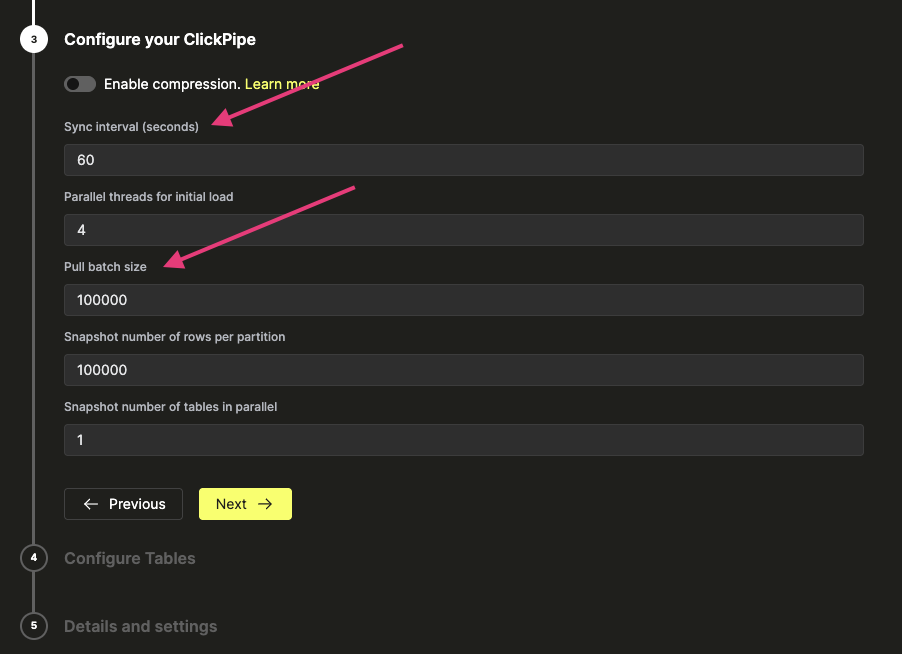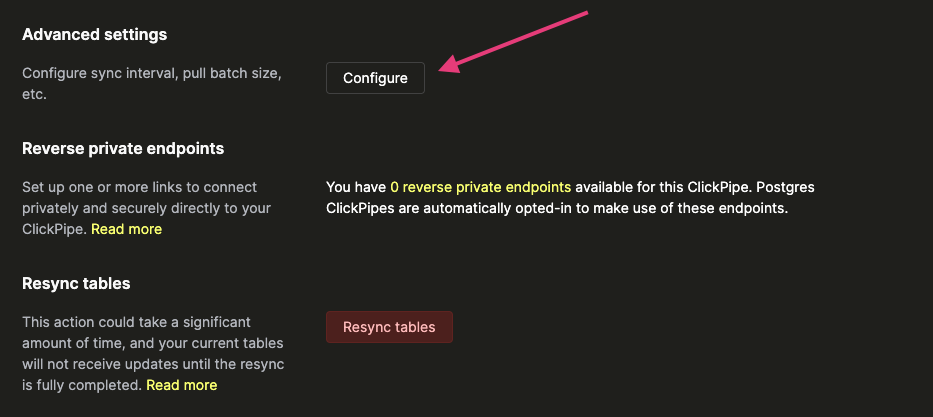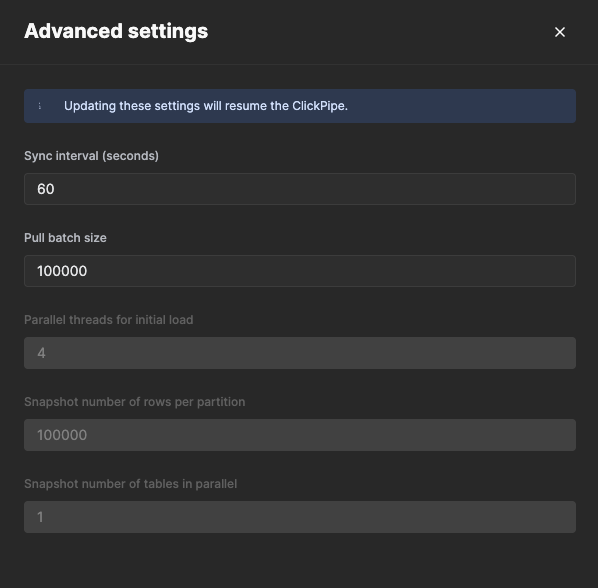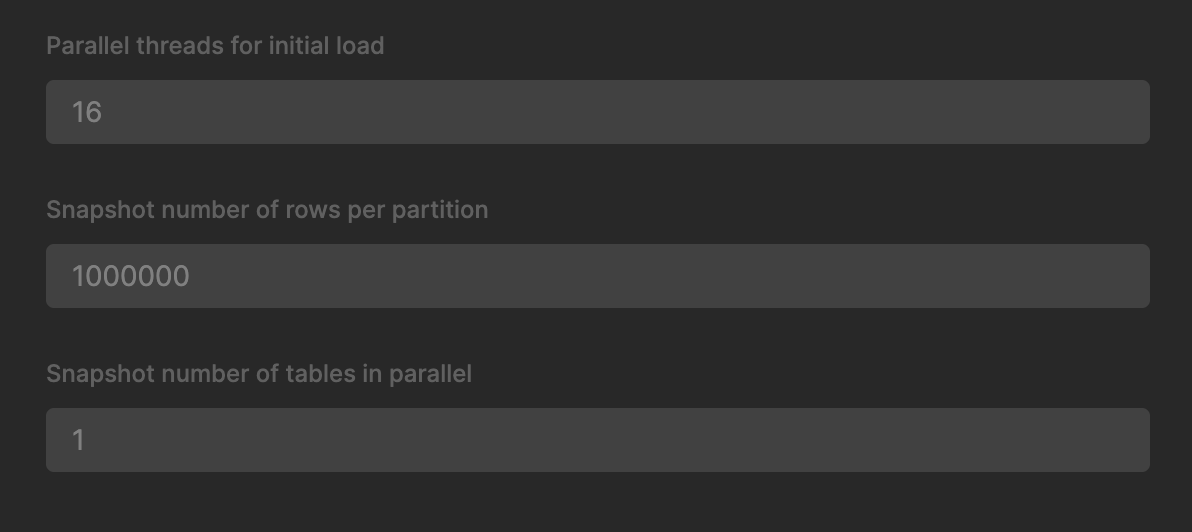控制 Postgres ClickPipe 的同步
本文档介绍在 ClickPipe 处于 CDC(运行中)模式 时如何控制 Postgres ClickPipe 的同步。
概览
数据库 ClickPipes 的架构由两个并行流程组成——从源数据库拉取数据以及向目标数据库推送数据。拉取流程由同步配置控制,同步配置定义了多长时间拉取一次数据以及每次拉取多少数据。这里的“每次”指的是一个批次——因为 ClickPipe 是按批次拉取和推送数据的。
控制 Postgres ClickPipe 同步有两种主要方式。当下面任一设置生效时,ClickPipe 就会开始推送数据。
同步间隔
管道的同步间隔是 ClickPipe 从源数据库拉取记录的时间长度(以秒为单位)。将已有数据推送到 ClickHouse 所花费的时间不包含在该间隔内。
默认值为 1 分钟。 同步间隔可以设置为任意正整数值,但建议保持在 10 秒以上。
拉取批大小
拉取批大小是指 ClickPipe 在一个批次中从源数据库拉取的记录数量。这里的记录是指对属于该管道的表执行的插入、更新和删除操作。
默认值为 100,000 条记录。 安全的最大值为 1,000 万。
特例:源端的长事务
当在源数据库上执行事务时,ClickPipe 会等待直到收到该事务的 COMMIT 之后才会继续推进。这会覆盖同步间隔和拉取批大小这两个设置。
配置同步设置
你可以在创建 ClickPipe 时或编辑现有 ClickPipe 时设置同步间隔和拉取批大小。 在创建 ClickPipe 时,可以在创建向导的第二步中看到这些设置,如下所示:

在编辑现有 ClickPipe 时,你可以前往该管道的 Settings 选项卡,先暂停管道,然后点击这里的 Configure:

这会打开一个包含同步设置的侧边面板,你可以在其中更改同步间隔和拉取批大小:

调整同步设置以缓解 replication slot 膨胀
下面介绍如何使用这些设置来处理 CDC 管道中较大的 replication slot。 向 ClickHouse 推送数据所需的时间并不会与从源数据库拉取数据的时间线性扩展。可以利用这一点来减小较大 replication slot 的大小。 通过同时增加同步间隔和拉取批大小,ClickPipe 会在一次拉取中从源数据库获取大量数据,然后再将其推送到 ClickHouse。
监控同步控制行为
你可以在 ClickPipe 的 Metrics 选项卡中的 CDC Syncs 表里查看每个批次耗时多久。请注意,这里的时长包含推送时间;此外,如果没有新行到达,ClickPipe 会进行等待,这段等待时间也会计入时长之中。


